
Browse an alphabetical list of photographs. These historical images portray people, places, and events before, during, and after World War II and the Holocaust.
<< Previous | Displaying results 1951-1975 of 2641 for "Photo" | Next >>
Sack of wood flour (finely powdered wood or sawdust) used to make substitute bread. The official ration of this "bread" for Soviet prisoners of war was less than 5 ounces a day. Deblin, Poland, 1942 or 1943.
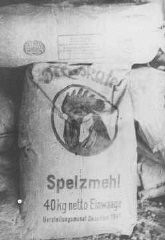
Exterior view of barracks at the Ravensbrück concentration camp. Ravensbrueck, Germany, between May 1939 and April 1945.
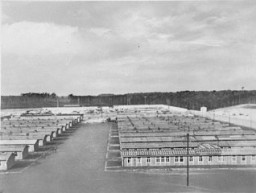
Red triangle patch worn by Czech political prisoner Karel Bruml in Theresienstadt. The letter "T" stands for "Tscheche" (Czech in German).
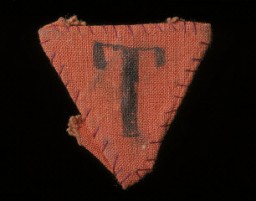
Refugee boys from Syria play on old tents in the Domiz refugee camp outside Duhok, Iraqi Kurdistan. September 5, 2015.
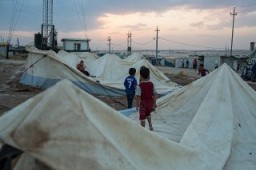
A camp for Darfurian refugees in Chad. Photograph taken in 2005. In July 2004 the United States Holocaust Memorial Museum declared a Genocide Emergency for the Darfur region of Sudan.
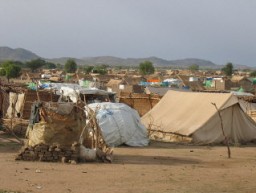
View of Zbaszyn, the site of a refugee camp for Jews of Polish nationality who were expelled from Germany. The Jewish refugees, hungry and cold, were stranded on the border, denied admission into Poland after their expulsion from Germany. Photograph taken between October 28, 1938, and August 1939. Warsaw-based historian, political activist, and social welfare worker Emanuel Ringelblum spent five weeks in Zbaszyn, organizing assistance for the refugees trapped on the border.
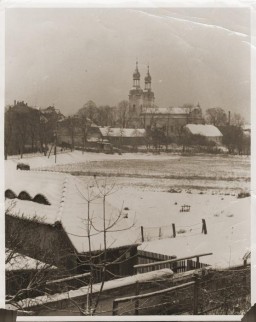

At some point after the war, Sophie received this small stuffed bear (about three inches high) as a present from her mother. She named it “Refugee,” just like she and her mother were refugees of the war.

A replica of "Refugee" bear and a photo of a Darfurian child refugee, items taken by Commander Mark Polansky (pictured) on a December 2006 Space Shuttle mission.

A young Jewish refugee, wounded while resisting British soldiers on board the Aliyah Bet ("illegal" immigration) ship Knesset Israel, is deported to a Cyprus detention camp. Haifa port, Palestine, April 12, 1946.

Refugees crowd the rail of the Aliyah Bet ("illegal" immigration) ship Josiah Wedgewood, anchored at the Haifa port. British soldiers transported the passengers to the Athlit internment center. Palestine, June 27, 1946.
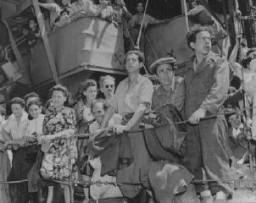
Refugees aboard the St. Louis wait to hear whether Cuba will grant them entry. Off the coast of Havana, Cuba, June 3, 1939.

Refugee women and children arrive by truck in Tuzla during the Bosnian War, which lasted from 1992 to 1995. They are likely coming from Srebrenica. Photo taken in March 1993.
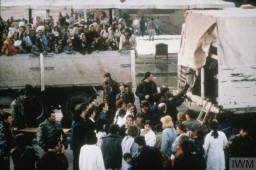
Jewish refugees crowd together in the sleeping quarters aboard the Exodus 1947. July 1947,
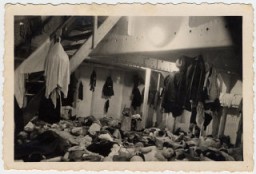
Refugees displaced by the violence in Syria wait at a transit center in Jordan for trucks that will take them to the Zaatari refugee camp. February 2014.
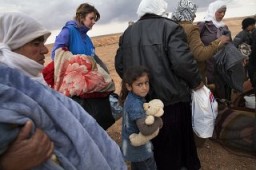
Refugees displaced by the violence in Syria walk to a transit center in Jordan where they will be transported to the Zaatari refugee camp. February 2014.
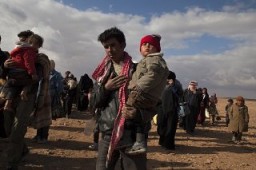
Belgian refugees in Paris during World War I, the first great international conflict of the twentieth century. Paris, France, 1914.
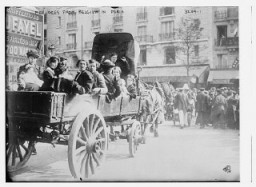
Refugees in a camp in eastern Chad for refugees from the Darfur region of neighboring Sudan. Jerry Fowler, Staff Director of the Museum's Committee on Conscience, visited in May 2004 to hear firsthand the refugees' accounts of the genocidal violence they faced and of being driven into the desert.
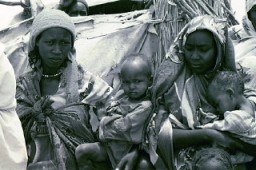
Refugees line up in a camp in eastern Chad for refugees from the Darfur region of neighboring Sudan. Jerry Fowler, Staff Director of the Museum's Committee on Conscience, visited in May 2004 to hear firsthand the refugees' accounts of the genocidal violence they faced and of being driven into the desert.
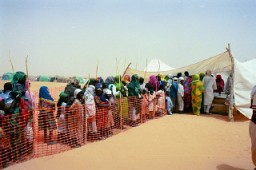
Refugees from the Sudetenland, following its annexation by Germany, arrive in Prague. Prague, Czechoslovakia, ca. October 1938.
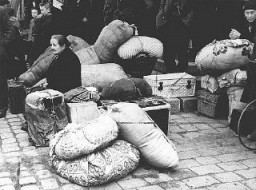
Refugees in the Gare de Lyon in Paris during World War I. Paris, France, photograph taken ca. 1914–15.
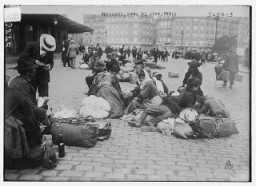
Soviet refugees sit around a fire in a makeshift camp, following the German invasion of Soviet territory on June 22, 1941. Soviet Union, between 1941 and 1944.
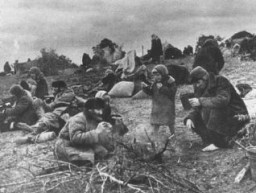
Civilians flee Warsaw following the German invasion of Poland. Hundreds of thousands of both Jewish refugees and non-Jewish refugees fled the advancing German army into eastern Poland, hoping that the Polish army would halt the German advance in the west. Many of the refugees fled without a specific destination in mind. They traveled on foot or by any available transport—cars, bicycles, carts, or trucks—clogging roads to the east. Most took only what they could carry.

Refugees from Nazi Germany on board the St. Louis en route to Cuba. The passengers were denied entry into Cuba and the US and were forced to return to Europe. 1939.
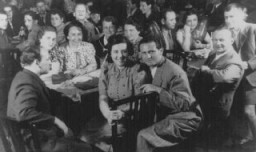
Refugees displaced by violence in Syria board trucks at a transit center in Jordan that will take them to the Zaatari refugee camp in February 2014.
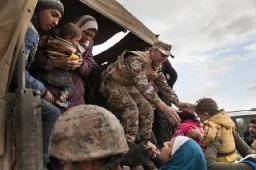
We would like to thank Crown Family Philanthropies, Abe and Ida Cooper Foundation, the Claims Conference, EVZ, and BMF for supporting the ongoing work to create content and resources for the Holocaust Encyclopedia. View the list of donor acknowledgement.